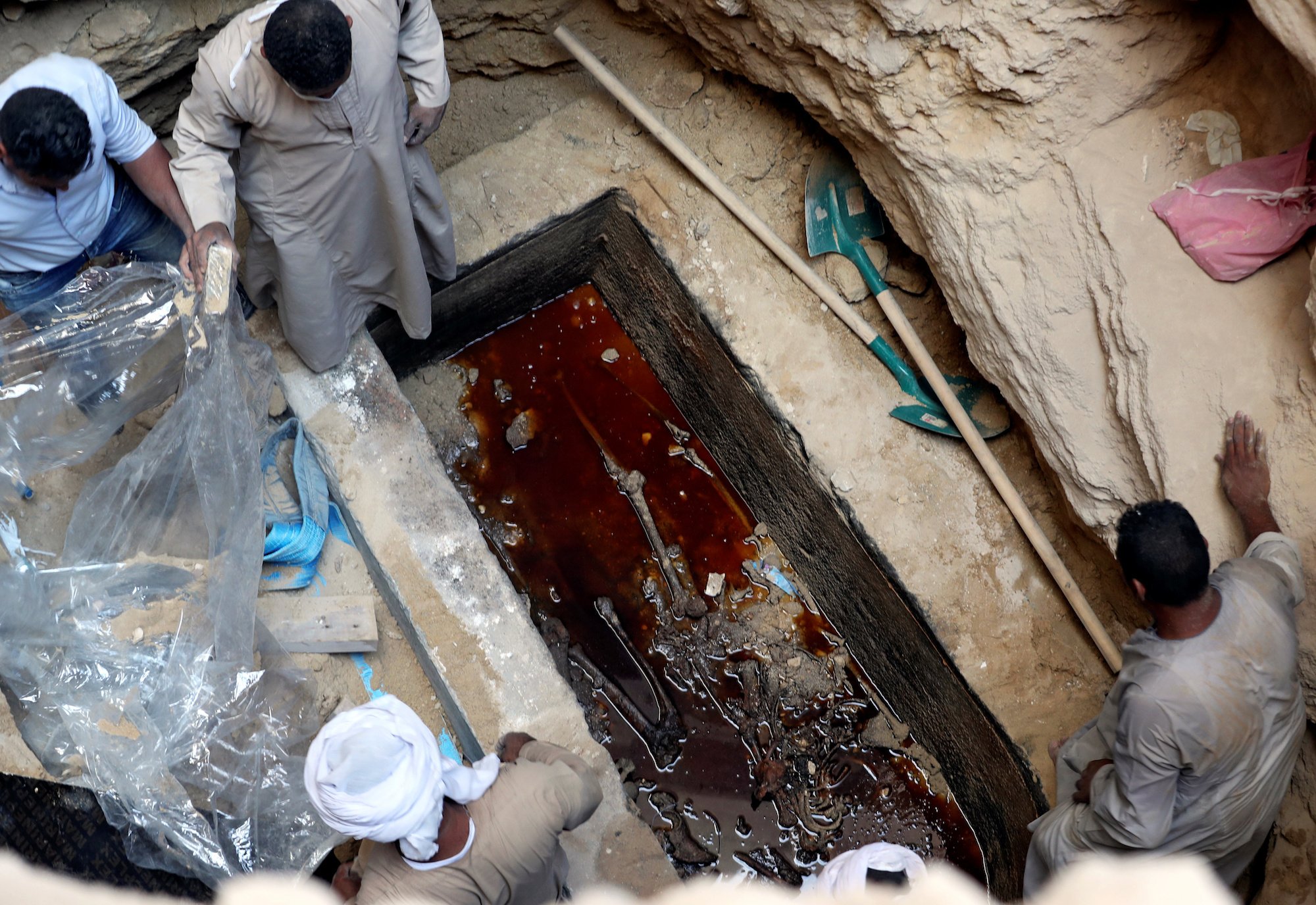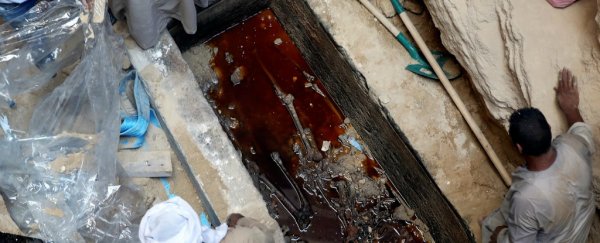Egyptian archaeologists on Thursday pried open a mysterious 30-ton black sarcophagus and found three skeletons, including one that had suffered a blow to the skull.
Legends abounded about the sarcophagus, which construction workers found earlier this month more than 16 feet (5 metres) below ground in a residential area of Alexandria.
Some observers thought it might contain the corpse of Alexander the Great, as the sarcophagus dates back to the early Ptolemaic period (about 323 BCE), which began after his death.
Despite warnings of an ancient curse to those who would open the 2,000-year-old sarcophagus, archaeologists went ahead on Thursday, enlisting the help of Egyptian military engineers.
"The sarcophagus has been opened, but we have not been hit by a curse," Mostafa Waziri, the secretary-general of Egypt's antiquities ministry, told Egypt Today, which published live updates of the sarcophagus opening.
 (Mohamed Abd El Ghany)
(Mohamed Abd El Ghany)
Waziri added that the sarcophagus was unusual for its size; it's the largest ever discovered in Alexandria.
What the archaeologists found inside the sarcophagus was grisly - but it was not the earth-shattering discovery some had hoped it would be.
The three skeletons found in the sarcophagus were most likely soldiers, according to Egypt's antiquities ministry, and one skull showed signs of fractures caused by a sharp instrument.
Beyond the skeletons, the sarcophagus was inundated with sewage water, which accelerated their decomposition.
The skulls will be further analyzed to understand their age, the cause of death, and where they came from.
Alexandria was the capital of Ptolemaic Egypt after Alexander's army conquered the region and deposed the old pharaohs. The Ptolemaic dynasty famously ended with Cleopatra's suicide during the Roman conquest of Greece and Egypt around 30 BCE.
This article was originally published by Business Insider.
More from Business Insider:
